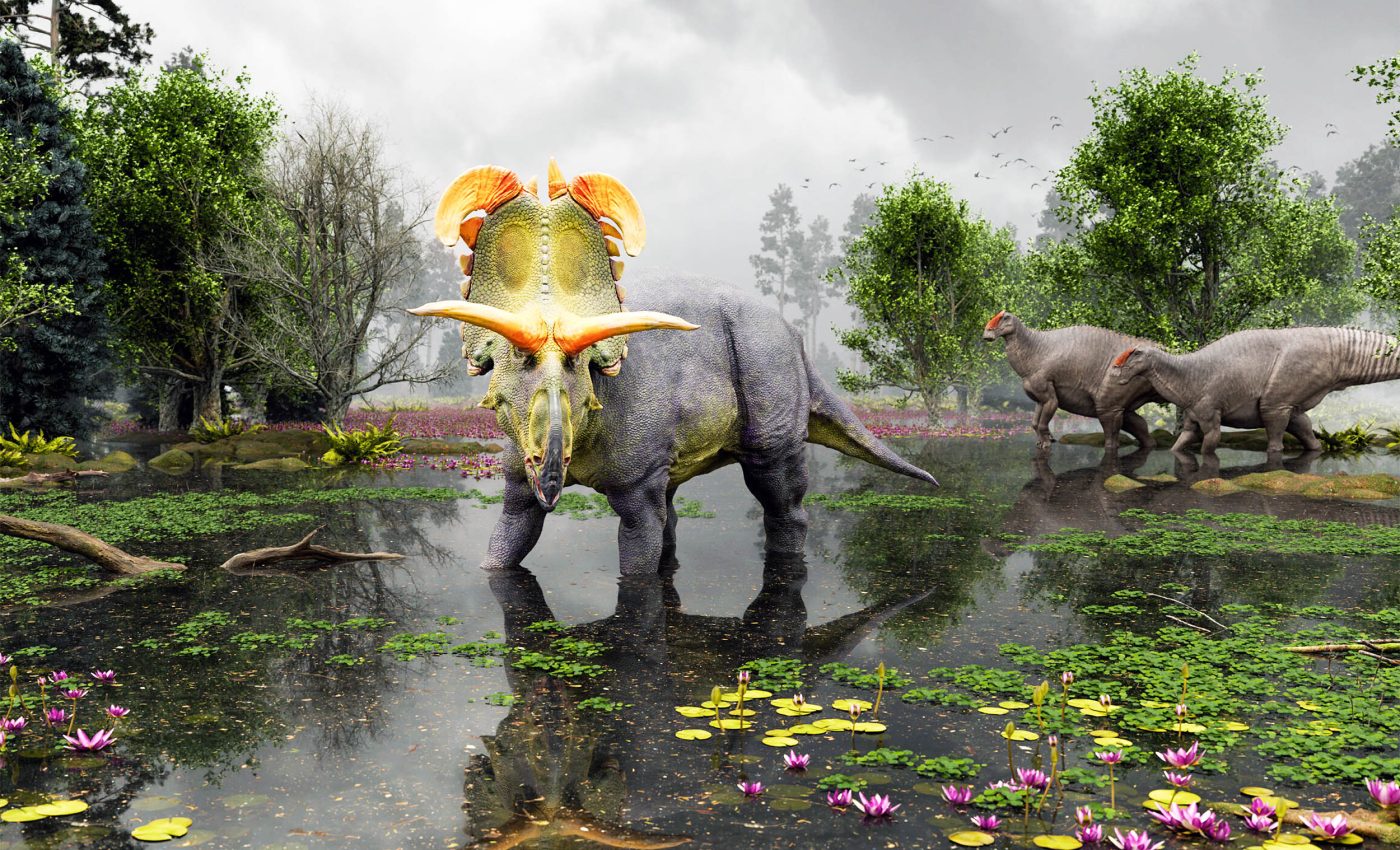
Scientists say this new horned dinosaur species is the 'largest and most ornate' of its kind ever found
Paleontologists are introducing us to a stunning new dinosaur called Lokiceratops – and it’s unlike anything we’ve seen before. This horned giant from the Late Cretaceous era stood out with an eye-catching frill and dramatic, twisted horns that likely turned heads 78 million years ago.
In that lush setting, herds of horned dinosaurs thrived, yet teasing apart who lived where – and why – has long been tricky because fossil beds are scattered and uneven.
A partial skull discovered in northern Montana, just south of the U.S.–Canada border, is changing that picture. The fossil belongs to a one-of-a-kind ceratopsian hints that dinosaur neighborhoods were busier and more partitioned than anybody expected.
A crowded northern neighborhood
Two paleontologists, Mark Loewen of the Natural History Museum of Utah (NHMU) and Joseph Sertich of the Smithsonian Tropical Research Institute (STRI), pieced the skull together from plate-sized fragments.
When the last chunk clicked into place, the pair realized they had something no one had ever cataloged.
“The dinosaur now has a permanent home in Denmark, so we went with a Norse god. In the end, doesn’t it just really look like Loki with the curving blades?” Loewen said.
The name they chose – Lokiceratops rangiformis – translates to “Loki’s horned face that looks like a caribou.”
Lokiceratops shared its habitat with four other horned species of similar build. Finding that many related giants in one slice of rock is unusual, almost like stumbling onto five kinds of modern rhinos grazing the same valley.
Those companions never turned up outside the region, pointing to tight geographic ranges along the ancient shoreline of the Western Interior Seaway.
Meet Lokiceratops rangiformis
At roughly 22 feet long and tipping the scales near 11,000 pounds, Lokiceratops is the heavyweight champion of North American centrosaurines. Its frill sports sweeping, blade-shaped spikes plus two asymmetrical horns that jut out like crooked antlers.
Even more surprising, the dinosaur lacks the short nose horn typical of its cousins, trading it for a cleaner facial profile that draws every eye to its ornate neck shield.
“These skull ornaments are among the keys to unlocking horned dinosaur diversity and demonstrate that evolutionary selection for showy displays contributed to the dizzying richness of Cretaceous ecosystems,” Sertich explained during the fossil’s unveiling.

A full-scale replica now greets visitors there, while the original fossil rests safely at the Museum of Evolution in Denmark.
“It’s one of those stories with a happy ending where it didn’t go to somebody’s mansion,” Sertich said. “It ended up in a museum, where it will be preserved forever so people can study it and enjoy visiting it.”
Lokiceratops used horns as social signals
The team’s analysis lists Lokiceratops as the owner of the largest frill horns ever documented in a ceratopsian. Sertich likens that flamboyance to a peacock’s tail rather than battlefield weaponry.
“We think that the horns on these dinosaurs were analogous to what birds are doing with displays,” Sertich said. “They’re using them either for mate selection or species recognition.”

Given that closely related species lived side by side, clear visual cues would have been essential to avoid courting the wrong partner – or sparring with the wrong rival.
Staying close to home
Modern birds and antelope show how flashy ornaments can blossom rapidly when populations split into pockets.
The new fossil suggests that the same evolutionary sprint unfolded in Late Cretaceous North America, turning each basin along Laramidia’s shoreline into an evolutionary hothouse for horn design.
Lokiceratops emerged from the same rock horizon as its four neighbors, meaning all five grazed the wetlands together.
“Finding five living together represents unheard-of diversity, similar to what you would see on the plains of East Africa today with different horned ungulates,” Sertich noted.
Despite their bulk, these animals seem to have stayed in their respective postal codes instead of roaming from Montana to Mexico the way elk or bison wander today.
The climate along the seaway likely shifted over short distances, offering distinct plant communities every few dozen miles.
Competition among similarly sized herbivores would then reinforce local loyalty, while sexual selection for novel horn shapes pushed each isolated population down its own artistic path.
Rewriting the family tree
The study adds fresh branches to the centrosaurine family tree, extending the roster of known species and clarifying their relationships.
Lokiceratops slots in among northern relatives, while southern cousins evolved their own ornament styles.
Twelve million years later, by the time Triceratops appeared, that local specialization had faded, leaving just two widespread horned forms across the continent – perhaps because climates grew more uniform.

“Lokiceratops helps us understand that we are only scratching the surface when it comes to the diversity and relationships within the family tree of horned dinosaurs,” Loewen said.
The team’s updated phylogeny hints that many more region-locked species await description, their remains still buried in unprospected outcrops.
Why Lokiceratops still matters today
Every new ceratopsian teaches paleontologists how evolution tinkers with anatomy under different pressures.
Lokiceratops highlights the role of social display in driving diversity – even among animals weighing as much as a delivery truck.
It also reminds us that North America’s sprawling herds of Triceratops were the exception, not the rule, with earlier communities split into tight neighborhoods that would have felt foreign just a day’s walk away.
Beyond pure science, the discovery shows the value of keeping fossils in public trust.
Thanks to its museum home, researchers worldwide can test new ideas against the real bones, while visitors young and old stand eye to horn with a creature that turned vanity into art. And vanity, it seems, never goes out of style.
The full study was published in the journal PeerJ.
—–
Like what you read? Subscribe to our newsletter for engaging articles, exclusive content, and the latest updates.
Check us out on EarthSnap, a free app brought to you by Eric Ralls and Earth.com.
—–













